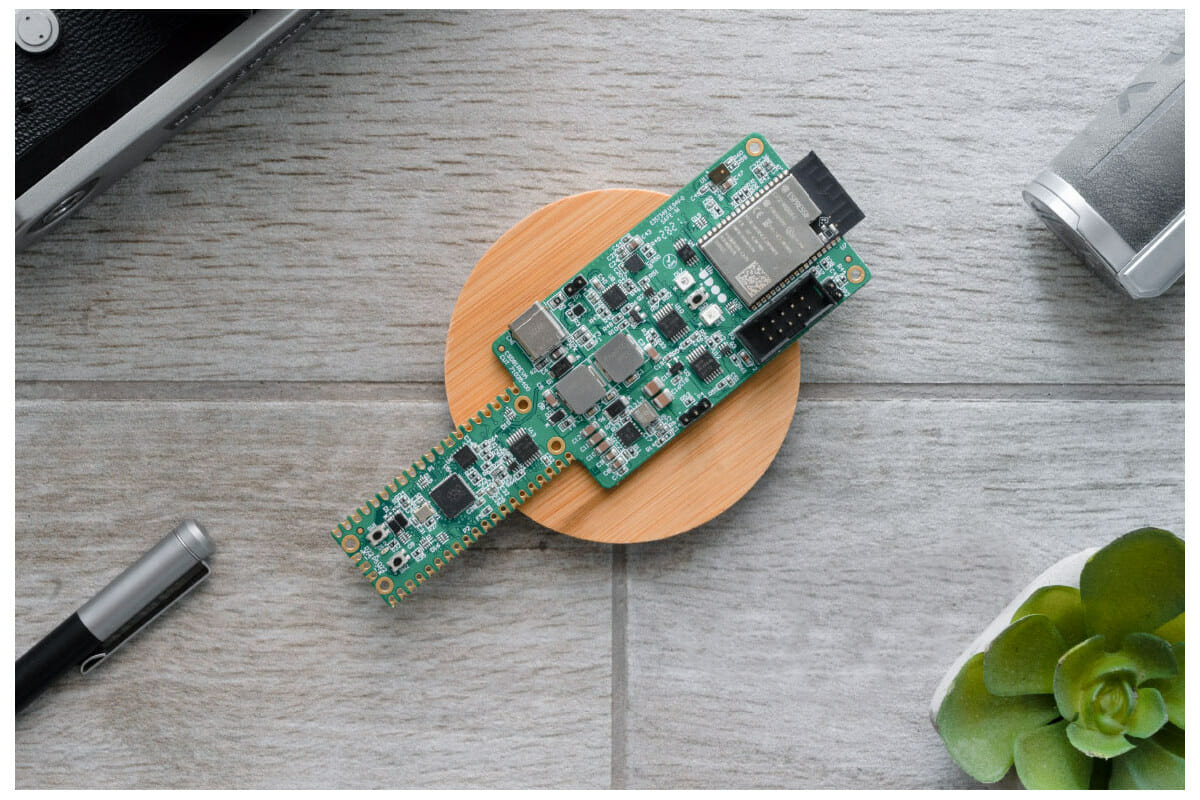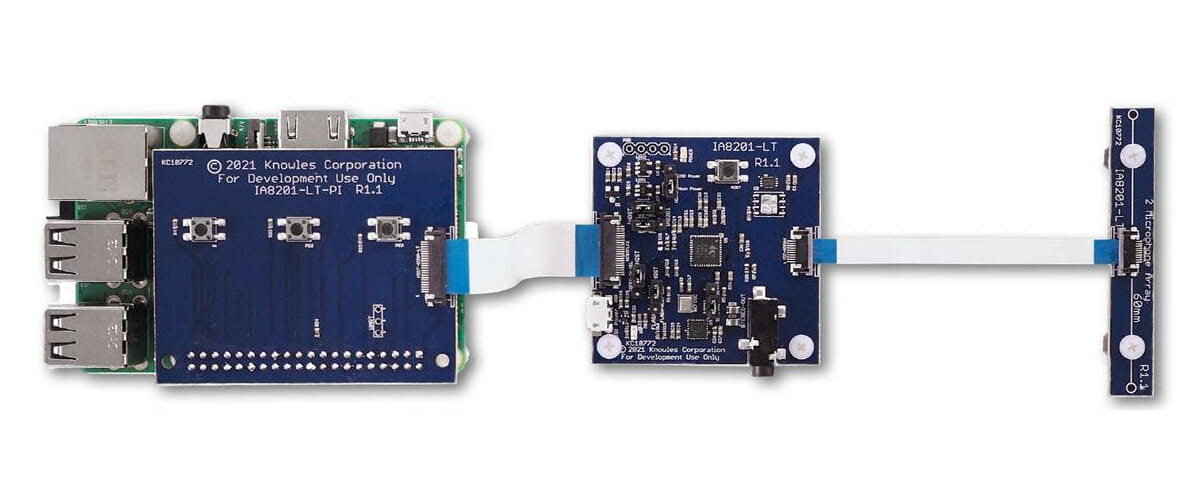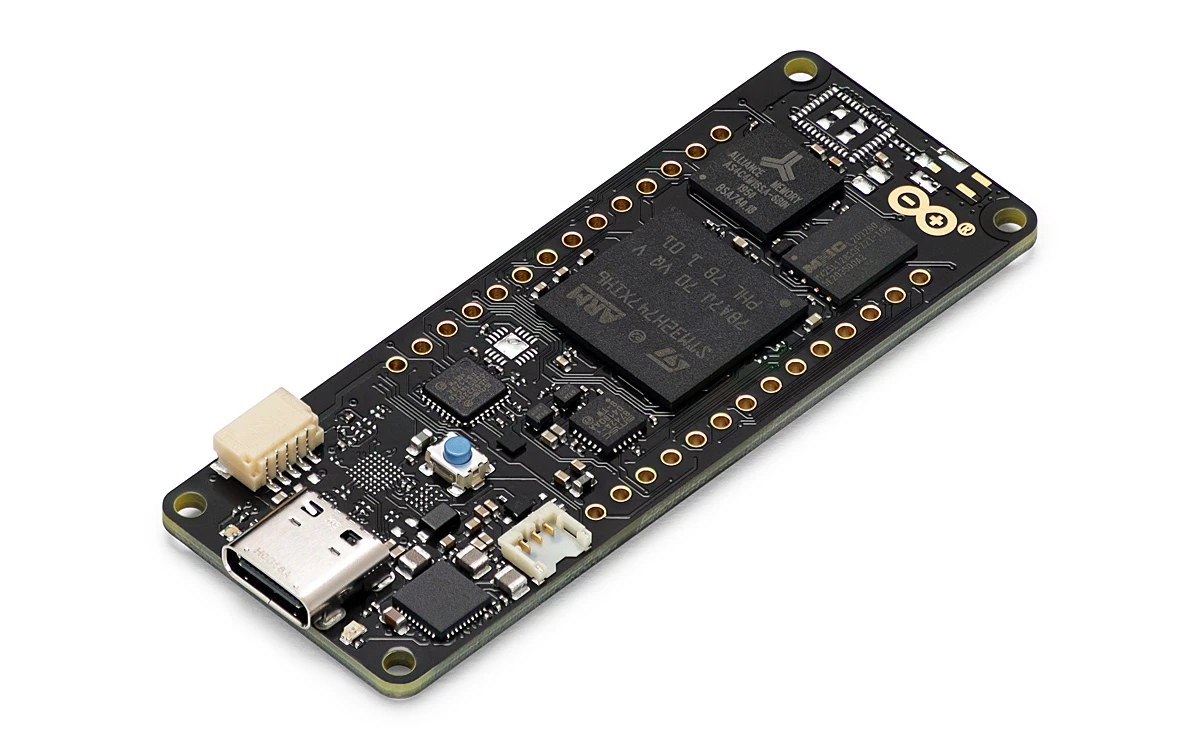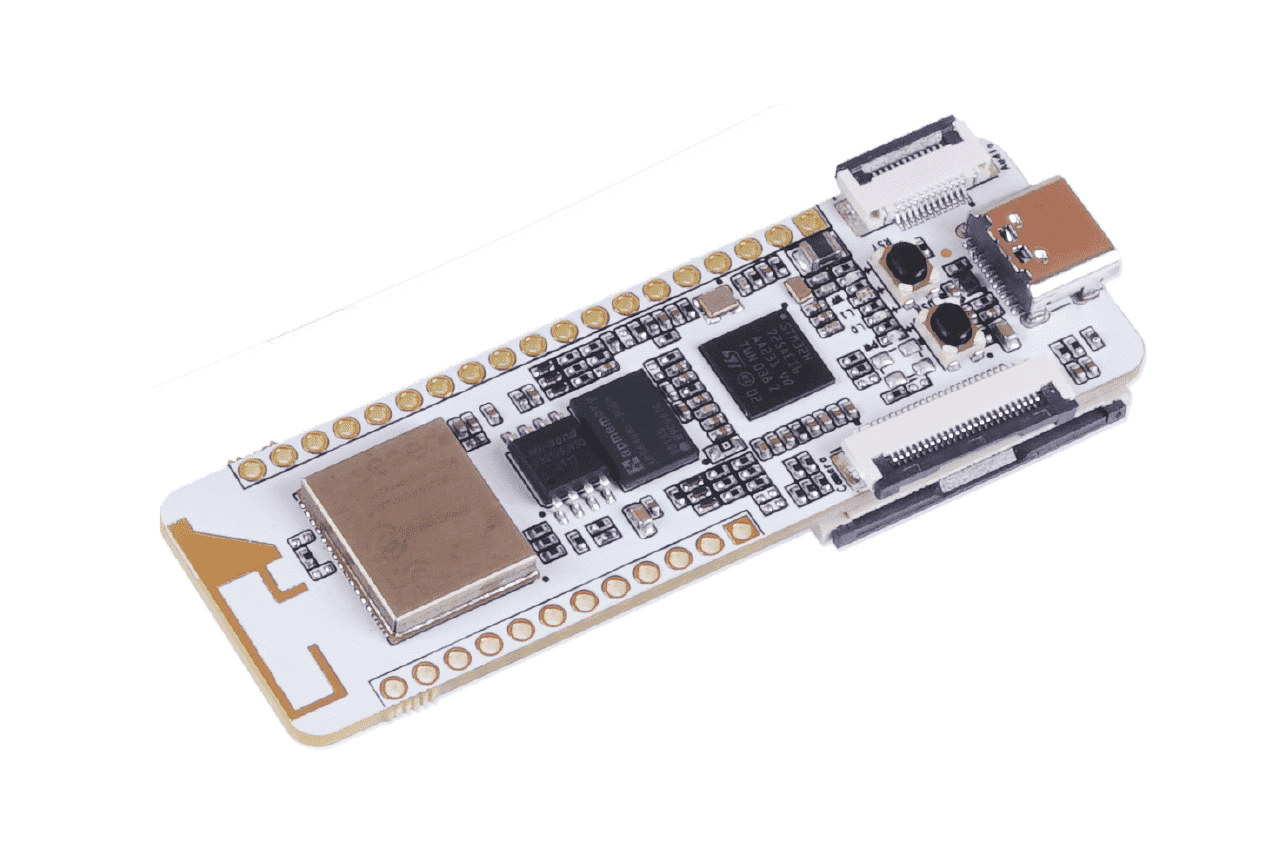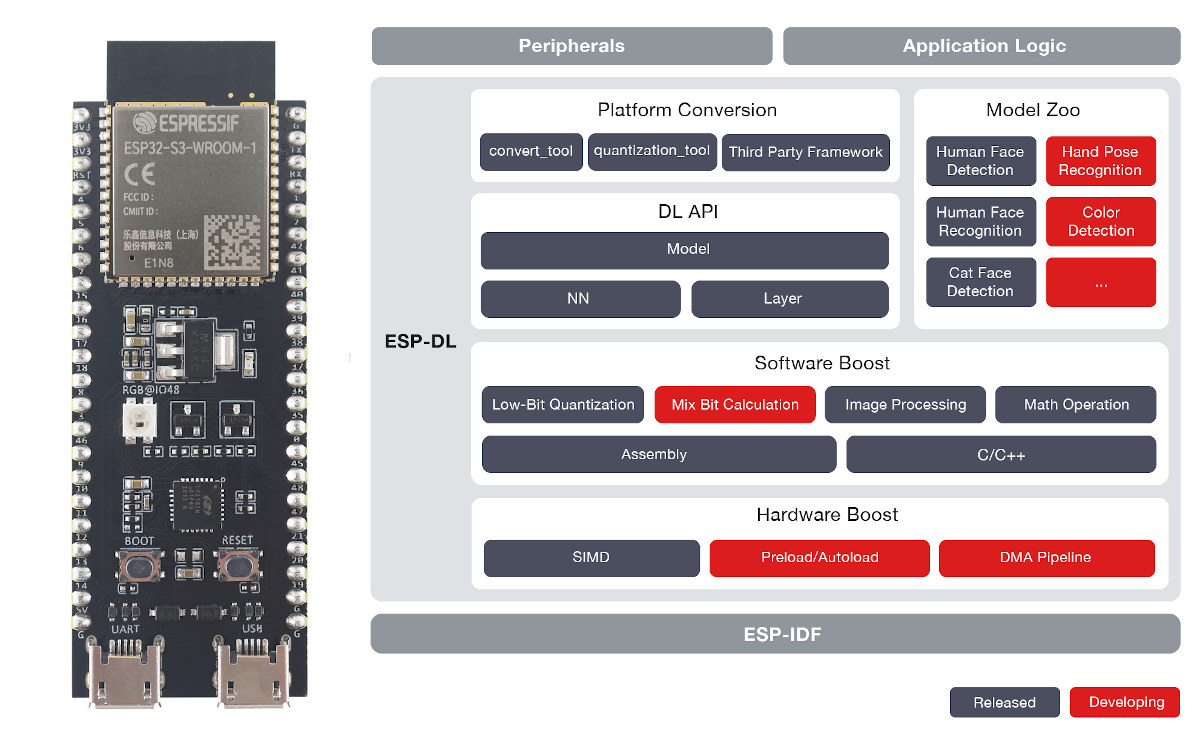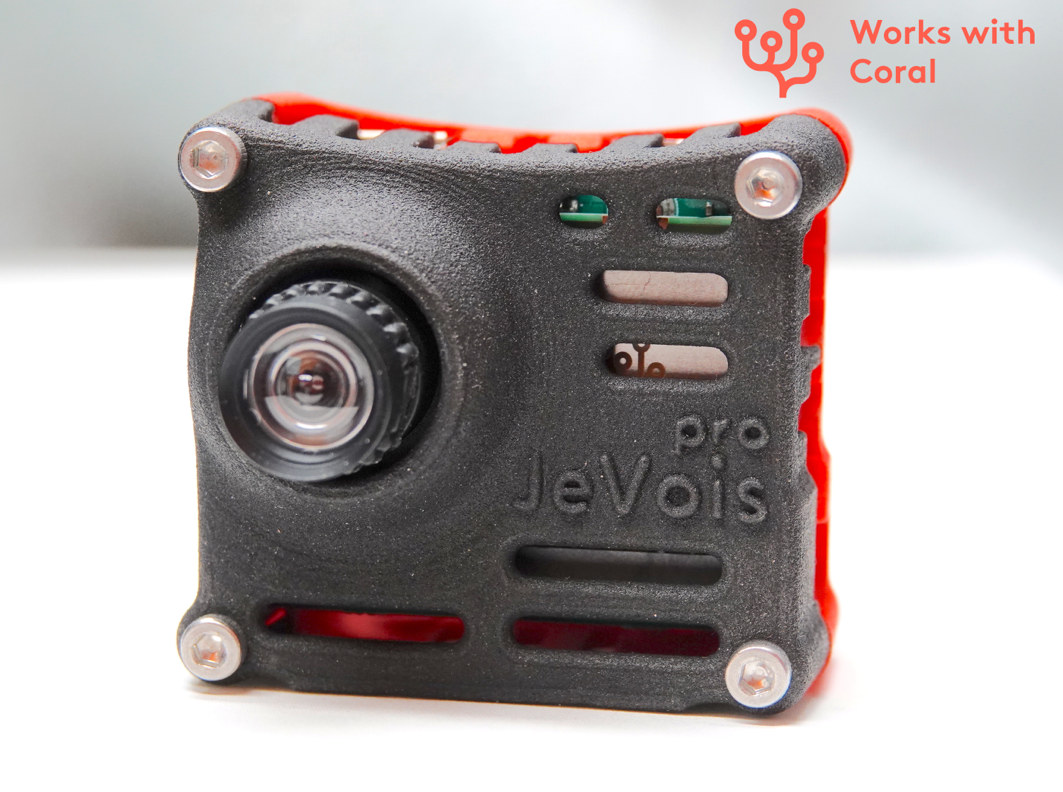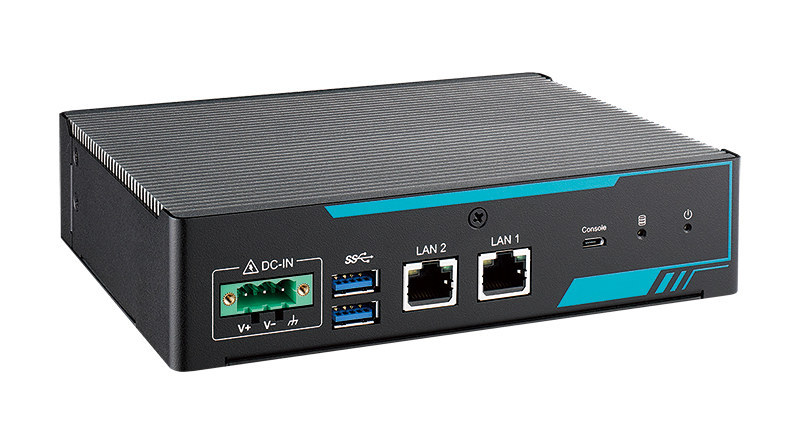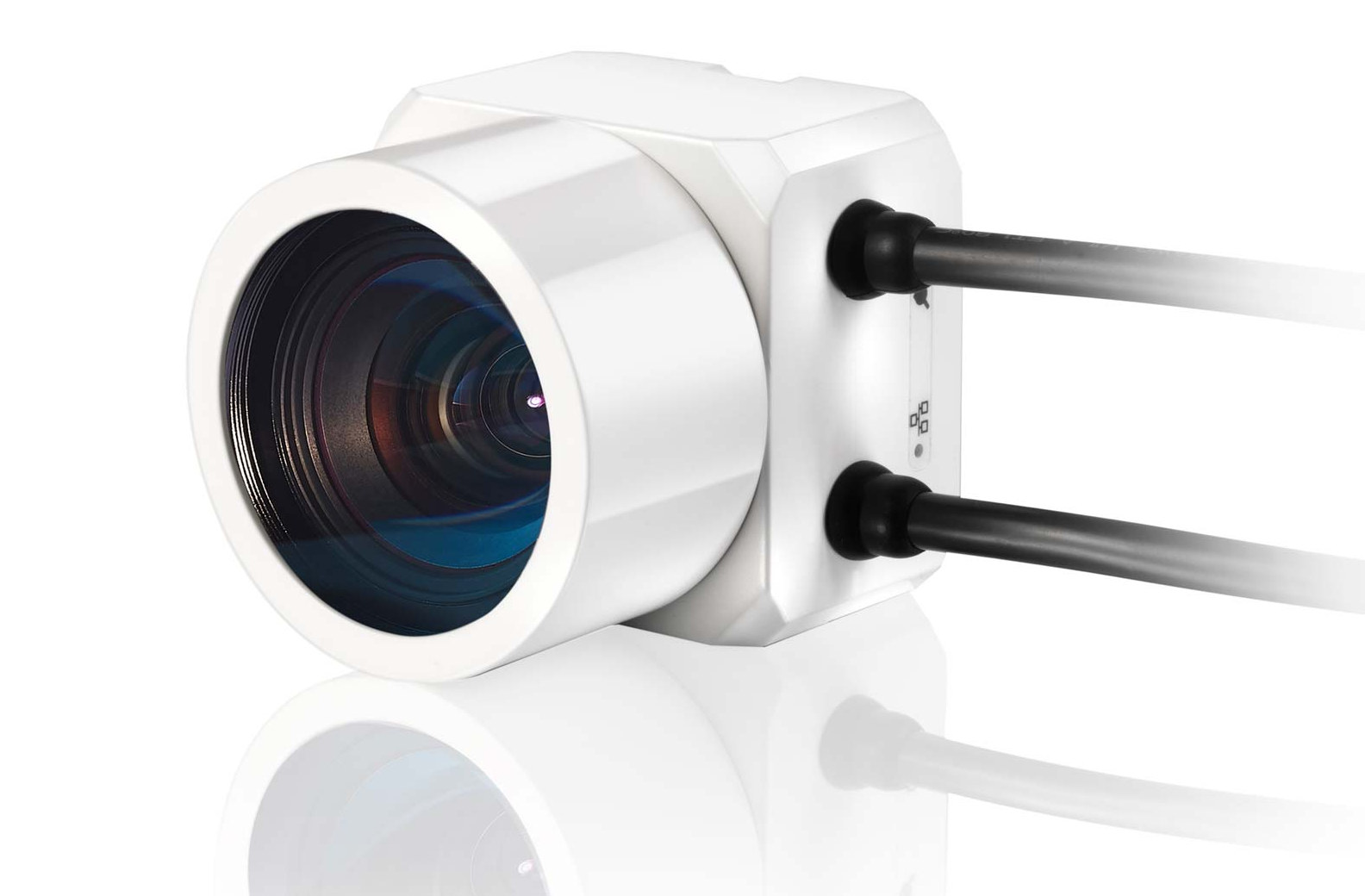UDOO is known for its x86 boards that embed an Arduino compatible MCU, but the UDOO KEY is different, as it does without an Intel or AMD processor, and instead, combines Raspberry Pi RP2040 microcontroller with Espressif ESP32 WiFi & Bluetooth WiSoC. As we noted in the past combining Raspberry Pi Pico/RP2040 with ESP32 does not make a lot of sense in most cases, but here’s the UDOO KEY will be offered for just $4 for the first 1,000 units, so they’ll basically throw the ESP32 for free since it’s the same price as one Raspberry Pi Pico, before eventually selling the device for $20. UDOO KEY specifications: MCU- Raspberry Pi RP2040 dual-core Arm Cortex-M0+ microcontroller @ 133 MHz with 264KB of on-chip SRAM Storage – 8MB QSPI Flash for RP2040 Wireless module – ESP32-WROVER-E with ESP32-D0WD-V3 dual-core WiFi + Bluetooth SoC, 16MB SPI flash, and 8MB PSRAM Sensor – […]
Raspberry Pi smart audio devkit features AISonic IA8201 DSP, microphone array
Knowles AISonic IA8201 Raspberry Pi development kit is designed to bring voice, audio edge processing, and machine learning (ML) listening capabilities to various systems, and can be used to evaluate the company’s AISonic IA8201 DSP that was introduced about two years ago. The kit is comprised of three boards with an adapter board with three buttons connecting to the Raspberry Pi, as well as the AISonic IA8210 DSP board itself connected via a flat cable to a microphone array. Knowles AISonic Raspberry Pi development kit Knowles did not provide the full details for the development but says it enables wake-on-voice processing for low latency voice UI, noise reduction, context awareness, and accelerated machine learning inferencing for edge processing of sensor inputs. Some of the use cases include Low Power Voice Wake to listen for specific OEM keywords to wake the host processor, Proximity Detection when combined with an ultrasonic capable […]
Portenta H7 Lite cost-optimized Arduino Pro board drops WiFi, USB-C video output, NXP secure element
Arduino Portenta H7 Lite is a cost-down version of Portenta H7 STM32H7 that shaves off a little over $30 of the Arduino Pro board by doing without a wireless module nor USB-C video output and opting for a lower cost Microchip ATECC608 secure element. Arduino says the new board provides a cost-optimized solution for companies developing high-end industrial machinery, laboratory equipment, computer vision, PLCs, robotics controllers, and mission-critical devices. Arduino Portenta H7 Lite specifications (with differences in bold or strikethrough): Microcontroller – STMicro STM32H747XI Cortex-M7 @ 480 MHz + M4 @ 200 MHz MCU with 2MB dual-bank Flash memory, 1 MB RAM, Chrom-ART graphical hardware accelerator System Memory – 2MB SDRAM (upgradeable up to 64MB) Storage – 16MB QSPI NOR Flash (Upgradeable up to 128MB) Connectivity 2.4GHz WiFi 802.11b/g/n up to 65 Mbps and Bluetooth 5.1 BR/EDR/LE via Murata 1DX module On-board 10/100M PHY Video I/F – MIPI DSI & […]
Wio Lite AI – An STM32H725A Cortex-M7 board for AI vision applications
Wio Lite AI is another development board from Seeed Studio’s “Wio Lite” family. The board is based on STMicro STM32H725A Cortex-M7 microcontroller with a dual-band WiFi and Bluetooth module, as well as camera & display interfaces for connected AI vision applications. The board builds upon the earlier Wio Lite and Wio Lite W600 boards with built-in wireless connectivity but offers much more processing power for computer vision or other applications. Wio Lite AI specifications: MCU – STMicro STM32H725AE Arm Cortex-M7 microcontroller @ 550MHz with DSP instructions, 512 KB flash, 564 KB RAM Memory – 8MB PSRAM (from AP Memory) Storage – 16MB SPI NOR flash and MicroSD card slot Display I/F – 40-pin FPC connector for LCD RGB565 or RGB888 displays Camera – 24-pin FPC connector for DCMI camera (OV2640) Audio – 12-pin FPC connector for audio Connectivity – Dual-band 2.4GHz / 5GHz Wi-Fi and Bluetooth 5.1 Expansion – Feather […]
Leverage ESP32-S3 AI capabilities with the ESP-DL library
ESP32-S3 is the first Espressif wireless processor with AI instructions, and ESP-DL library for ESP-IDF allows you to easily leverage those AI instructions using boards such as the ESP32-S3-DevKitC-1. The ESP-DL library provides APIs for Neural Network (NN) Inference, Image Processing, Math Operations, and Deep Learning Models that make full use of ESP32-S3’s AI instructions with a 16-bit face recognition model running 6.25 faster, while the 8-bit model is 2.5 times faster than without acceleration. The ESP-DL library can be used as a project component. For instance, it can be used as a submodule of ESP-WHO computer vision framework, by simply copying it to the esp-who/components/ directory. The Model Zoo contains several pre-trained models for (human) face detection & recognition, and cat face detection, with more being developed including color detection and hand-pose detection. Espressif Systems also provides tools to use your own models, and a convention tool allowing you […]
Jevois Pro small AI camera with Amlogic A311D SoC offers up to 13 TOPS (Crowdfunding)
Jevois-A33 smart camera was a tiny Linux camera with Allwinner A33 processor designed for computer vision applications and announced in 2016. I had the opportunity to review the computer vision camera the following year, and it was fun to use to learn about computer vision with many examples, but since it relied on the CPU for processing, it would not have been suitable for all projects due to the lag, as for example, object detection took 500ms and Yolo V3 around 3 seconds per inference. But time has passed, and great progress has been made in the computer vision and AI fields with the tasks now usually handled by a built-in NPU, or an AI accelerator card. So JeVois Pro deep learning camera has just been launched with an Amlogic A311D processor featuring a 5 TOPS NPU, and support for up to 13 TOPS via a Myriad X or Google […]
Edge AI system combines Foxconn FXN3102 Arm SoC with Hailo-8 or Lightspeeur 2801S AI accelerator
Did you know Foxconn makes processors now? Well, they do, or at least can pretend they do to as we’ll see below. Foxconn FXN3102 24-core Arm Cortex-A53 processor is found in Vecow VAC-1000, a compact Edge AI computing system, that also features either an Hailo-8 AI accelerator or Gyrfalcon Lightspeeur 2801S NPU. The Ubuntu 18.04 server system also comes with up to 16GB DDR4-2133 memory, optional NX Witness VMS (Video Management System) supported, and targets intelligent surveillance applications such as public surveillance or traffic monitoring, as well as smart retail, factory automation, and any other AIoT/Industry 4.0 applications. Vecow VAC-1000 specifications: SoC – Foxconn FXN3102 24-core Arm Cortex-A53 processor @ up to 1.0 GHz System Memory – 8GB or 16GB DDR4 2133MHz ECC SO-DIMM Storage 64GB eMMC flash, 512MB SPI Flash, up to 512KB EEPROM 1x SATA III port up to 6 Gbps 1x M.2 2280 Key M socket for […]
Imago “VisionAI” Smart AI Camera supports Tensorflow Lite & AutoML Vision Edge
Imago Technologies GmbH “VisionAI” is a programmable Smart AI camera that combines a quad-core Cortex-A53 processor @ 1.8 GHz together with Google Edge TPU, and designed for embedded image processing applications in the fields of AI, Deep Learning, and Machine Learning. The smart camera supports TensorFlow Lite and AutoML Vision Edge frameworks, and is suited for tasks such as pattern recognition, classification, anomaly or defect detection in inspection applications, code reading, and other machine vision applications. Imago VisionAI (VisionSensor PV3 AI) camera specifications: SoC – Unnamed quad-core Arm Cortex-A53 processor @ 1.8 GHz (likely NXP i.MX 8M Mini) AI Accelerator – Google Edge TPU with up to 4 TOPS of AI processing power System Memory – 2 GB DDR4 RAM Storage – MicroSD card up to 32GB Connectivity – Gigabit Ethernet M12 connector Camera 1/1.8” 5MP mono or color CMOS sensor with 2560 × 1936 pixels resolution, up to 65 […]


